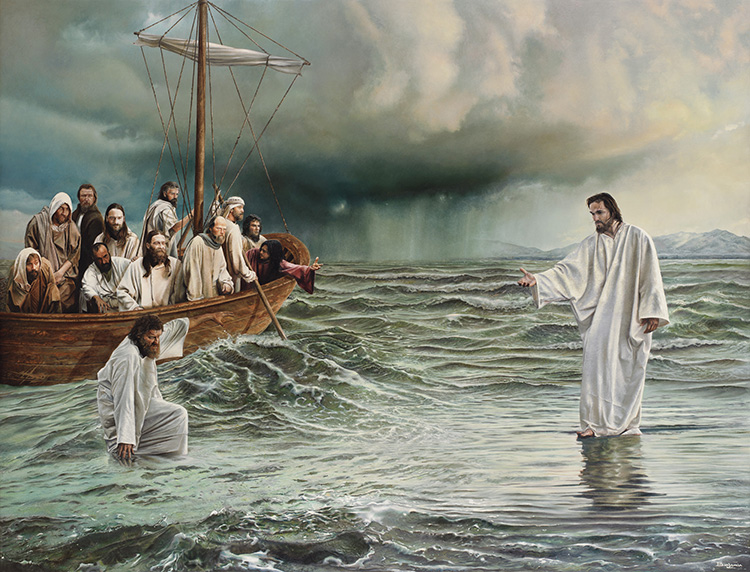Such an identification with the Unknown God, even of Christos, the anointed — the AEon who overshadowed him — let alone of the man Jesus, never entered the head of the Gnostics nor even of the direct apostles and of Paul, whatever later forgeries may have added.
How daring and desperate were many such deliberate falsifications was shown in the first attempts to compare the original manuscripts with later ones. In Bishop Horseley’s edition of Sir Isaac Newton’s works, several manuscripts on theological subjects were cautiously withheld from publication. The article known as Christ’s Descent into Hell, which is found in the later Apostles’ Creed, is not to be found in the manuscripts of either the fourth or sixth centuries. It was an evident interpolation copied from the fables of Bacchus and Hercules and enforced upon Christendom as an article of faith. Concerning it the author of the preface to the Catalogue of the Manuscripts of the King’s Library (preface, p. xxi.) remarks: “I wish that the insertion of the article of Christ’s Descent into Hell into the Apostles’ Creed could be as well accounted for as the insertion of the said verse” (First Epistle of John, v. 7).
Now, this verse reads: “For there are three that bear record in Heaven, the Father, the Word and the Holy Ghost; and these three are one.” This verse, which has been “appointed to be read in churches,” is now known to be spurious. It is not to be found in any Greek manuscript,” save one at Berlin, which was transcribed from some interpolated paraphrase between the lines. In the first and second editions of Erasmus, printed in 1516 and 1519, this allusion to these three heavenly witnesses is omitted; and the text is not contained in any Greek manuscript which was written earlier than the fifteenth century. It was not
Page 178
mentioned by either of the Greek ecclesiastical writers nor by the early Latin fathers, so anxious to get at every proof in support of their trinity; and it was omitted by Luther in his German version. Edward Gibbon was early in pointing out its spurious character. Archbishop Newcome rejected it, and the Bishop of Lincoln expresses his conviction that it is spurious. There are twenty-eight Greek authors — Irenaeus, Clemens, and Athanasius included, who neither quote nor mention it; and seventeen Latin writers, numbering among them Augustine, Jerome, Ambrosius, Cyprian, and Pope Eusebius, who appear utterly ignorant of it. “It is evident that if the text of the heavenly witnesses had been known from the beginning of Christianity the ancients would have eagerly seized it, inserted it in their creeds, quoted it repeatedly against the heretics, and selected it for the brightest ornament of every book that they wrote upon the subject of the Trinity.”
Thus falls to the ground the strongest trinitarian pillar. Another not less obvious forgery is quoted from Sir Isaac Newton’s words by the editor of the Apocryphal New Testament. Newton observes “that what the Latins have done to this text (First Epistle of John, v.), the Greeks have done to that of St. Paul (Timothy iii. 16). For, by changing [[o]] into [[th]], the abbreviation of [[theos]] (God), in the Alexandrian manuscript, from which their subsequent copies were made, they now read, “Great is the mystery of godliness, GOD manifested in the flesh“; whereas all the churches, for the first four or five centuries, and the authors of all the ancient versions, Jerome, as well as the rest, read: “Great is the mystery of godliness WHICH WAS manifested in the flesh.” Newton adds, that now that the disputes over this forgery are over, they that read GOD made manifest in the flesh, instead of the godliness which was manifested in the flesh, think this passage “one of the most obvious and pertinent texts for the business.”
And now we ask again the question: Who were the first Christians? Those who were readily converted by the eloquent simplicity of Paul, who promised them, with the name of Jesus, freedom from the narrow bonds of ecclesiasticism. They understood but one thing; they were the “children of promise” (Galatians iv. 28). The “allegory” of the Mosaic Bible was unveiled to them; the covenant “from the Mount Sinai which gendereth to bondage” was Agar (Ibid., 24), the old Jewish synagogue, and she was “in bondage with her children” to Jerusalem, the new and the free, “the mother of us all.” On the one hand the synagogue and the law which persecuted every one who dared to step across the narrow

Moe is the founder of GnosticWarrior.com. He is a father, husband, author, martial arts black belt, and an expert in Gnosticism, the occult, and esotericism.




